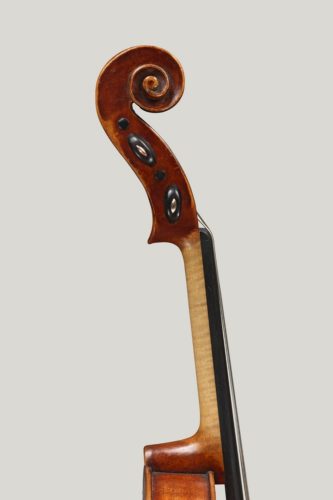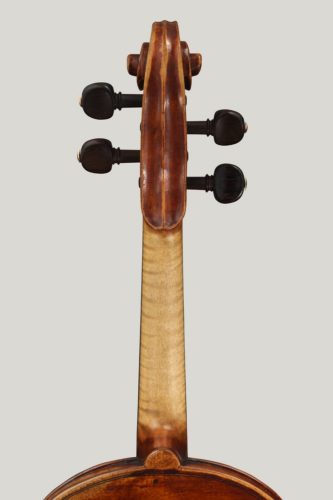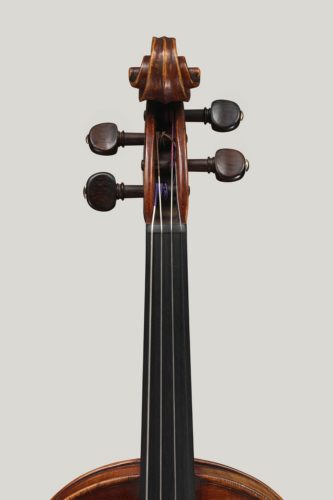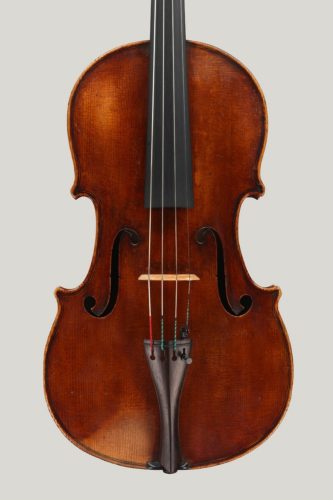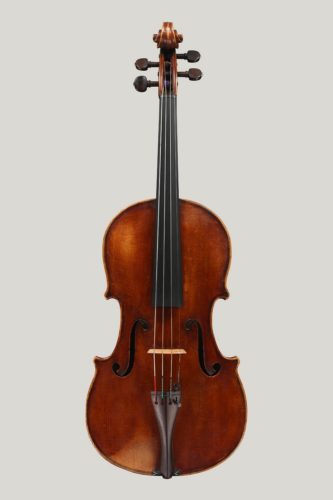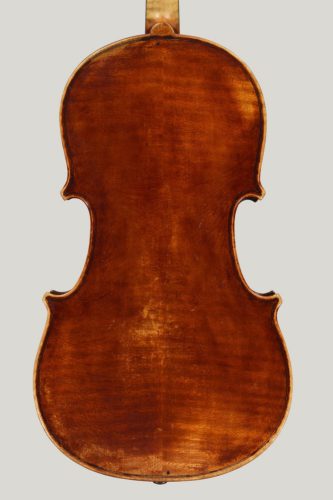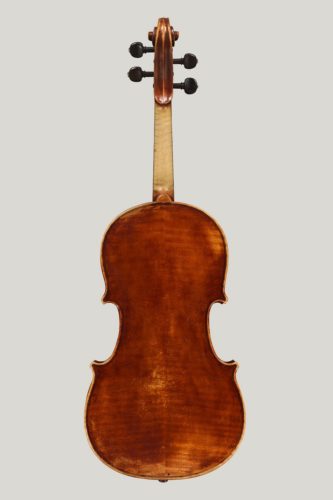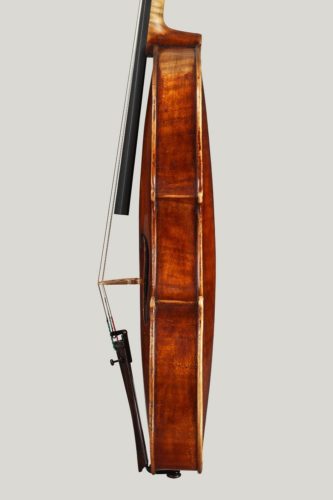Giovanni Battista Guadagnini
Viola made by Giovanni Battista Guadagnini in Turin, Italy, in 1784. Catherine Bullock plays on this instrument.
This viola is an outstandingly well-preserved companion to the earlier example from 1781.
The two instruments are remarkably similar, although the almost unbroken covering of thick red varnish observable on this later work is possibly in an even fresher condition. It bears an authentic original label dated Turin 1784, which also carries the dubious statement “alumnus Antonii Stradivari”. Guadagnini only made this claim late in life, possibly to impress his patron Count Cozio di Salabue, or merely to express his stylistic debt to the master, which can certainly be seen in these two violas.
Their form and proportions are closely compatible, suggesting that they were both built around the same mould. On the table, the soundholes show the same Stradivarian influences, possibly suggested to Guadagnini by Count Cozio; the lower wings are broad and deeply fluted, unlike his own earlier style.
The upper holes are larger on this instrument than the earlier example, but are similarly set wide apart and the entire “f” sits close to the edges of the centre bouts. The pure original varnish is disturbed only by vigorous wear beside the tailpiece, indicating long use without the benefit of a chinrest, a device which was not introduced until the middle of the 19th century.
The back is in a very pure state. The corners are still crisp and square, and are broad in an exaggeratedly Stradivarian style, but cut at a very inward sloping angle at the ends. The purfling is not well joined at the points, a reminder that Guadagnini was in his eighth decade when this viola was made, and his eyesight possibly not as true as it had once been. The surface of the wood beneath the varnish is covered with scratches from coarse abrasives used to smooth and finish the arch; this is characteristic of his late work, and another indicator of failing powers. Like its companion, the viola is made from modest materials, two matched maple pieces with a slightly more emphatic figure than previously, with similar ribs and a perfectly plain scroll.
The scroll is delightful in its exceedingly clean aspect, and all of Guadagnini’s signature idiosyncracies are present. He has returned to a lighter, more aesthetically pleasing chamfer which recalls his earliest work, unlike the heavily carved head of the 1781 viola which seems intended as an homage to Stradivari. It is still clearly stained with a black line, and the eye is surrounded by the characteristic prick marks Guadagnini habitually used as a guide in carving the volutes. From the rear, the head also harks back to earlier work, with a long oval shape to the pegbox terminating in a softly pointed chin. This is very different from the rigidly flat-sided head and semi-circular chin – marks of Stradivari’s style – seen on the 1781 instrument.
The viola is the most recent addition to the Dextra Musica collection, acquired in early 2010.
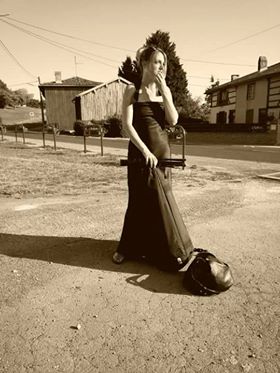
Catherine Bullock
Catherine Bullock (b. 1976 in Yeovil, England) is Principal viola in the Oslo Philharmonic Orchestra, and has worked as guest principal in the Philharmonia Orchestra, the Norwegian Chamber Orchestra, the Royal Liverpool Philharmonic and the BBC National Orchestra of Wales.
